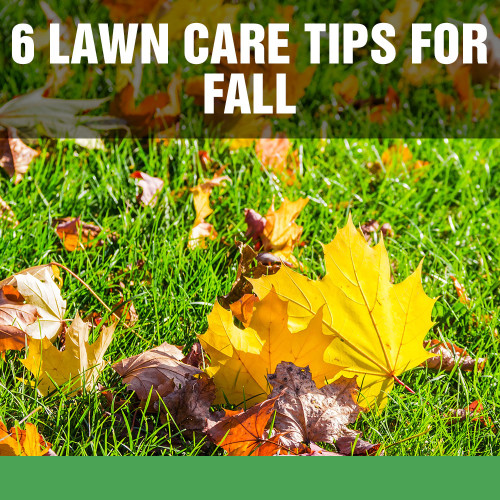Summer is over, but before the warm weather is completely gone for the year, now is the perfect time to groom and prepare your yard for fall.
Tip #1 – Keep the grass tall
Tall grass helps keep moisture during warmer temperatures. Mowing high also decreases turf damage from mowing too short, the grass is more drought tolerant, and more weed and grub tolerant.
Tip #2 – Trim and clean up your edges
Hedge trimmers and pruners are great lawn care tools to use this time of year. Fall is the perfect time to handle overgrown bushes and shrubs. Cutting old and thick branches promotes the growth of new stems.
An edger, string trimmer, or brushcutter are also great tools to enhance the look of your yard. They add bold, new definition to the area, and additionally they stop the entrance of plant roots into your sidewalk and driveway. After winter is over, it will be easier to reestablish a beautiful lawn and garden.
Tip #3 – Overseed when needed
You don’t want bald spots on your lawn when fall ends so it’s a good idea to overseed now.
If you are overseeding, do not mow high. When overseeding, cut the grass at your mower’s lowest height and bag the mower clippings instead of using them as mulch. This way, the seeds will get maximum contact with the soil and new grass will grow.
Tip #4 – Fertilize
While there are a variety of blended fertilizers in stores, fertilizing starts with you and your mower. Mow your lawn as you normally would and leave the finely chopped grass clippings on your lawn as mulch. Mulching allows the grass to naturally decompose while allowing nutrients to reach your soil and improve the health of your lawn.
Tip #5 – Aerate compacted soil
Aerating entails punching holes into the lawn to allow oxygen, water, and nutrients to reach the soil. The goal of aeration is to loosen compacted soil and is needed for lawns that suffer from heavy foot traffic and construction.
Tip #6 – Dethatch the lawn
Controlling the thatch on your lawn is an important part of lawn care. The thatch layer is the layer of dead grass, roots, and debris that accumulate on the surface of the soil. Over time, a thick mat forms and this prevents air and water from reaching the soil. Therefore, your lawn is more susceptible to diseases and pests.
If the thatch layer is over a half inch thick, it should be removed. Most lawns need dethatching once a year. To check if it’s time, work your fingers into the grass and take note of the thatch layer. To remove thatch from your lawn, use a dethatching rake or power dethatcher.
6 Lawn Care Tips for Fall

